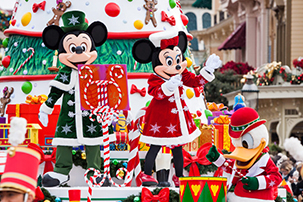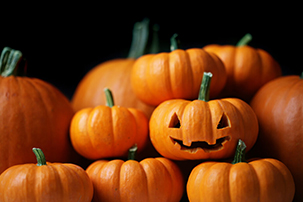‘Tis the season for Christmas trees! If you’re like me, you may wonder how artificial Christmas trees are designed and made to look so festive. From materials to colors, this post will dive into the details of the production of those classic holiday centerpieces. So let’s dive in and explore how these trees are made!
Introduction
Artificial Christmas trees have been gaining in popularity over the last few decades, and it is easy to see why. Not only are they much more convenient than natural trees, but they also use fewer resources than their living counterparts. So how exactly are these fake foliage wonders created?
Similar to natural trees, artificial Christmas trees rely on a combination of plastics, wire, and fabric to give them shape. These materials are blended in various ways depending on the tree being made – some involve finely cut pieces, while others use giant molds. The final result is a perfectly shaped replica with detailed needles that looks nearly indistinguishable from the real thing that often comes pre-lit for extra convenience. Whatever style or type you choose, you can rest assured knowing your artificial tree is sure to enjoy many holiday seasons to come!
History of Artificial Christmas Trees
The idea of an artificial Christmas tree predates the invention of electricity. The first artificial Christmas trees were born in the late 19th century in Germany, where they were constructed from goose feathers dyed green. It seems odd to think of a Christmas tree as anything other than a pine tree, but even as recently as the 1940s, people had to make due with more creative ideas for their holiday decorations.
The modern concept of artificial Christmas trees started with individual families and business manufacturers in the 1950s utilizing materials like aluminum, PVC plastic, and brush bristles. It was not until the late 1960s that these production innovations were brought together to create a full-sized marketable alternative to natural trees. The modern version looks more realistic and is made of materials like PE plastic needles on wire-framed branches.
Nowadays, these mass-produced pre-lit “evergreen” are available in a wide range of shapes, sizes and colors to suit various tastes. Although they don’t provide any real benefits over standard cut trees other than convenience, they have become increasingly popular especially among reuse enthusiasts by helping customers get into the spirit without extra labour or composting duties post-season.
Manufacturing Process of Artificial Christmas Trees
Artificial Christmas trees are not just for convenience – their appeal lies in the fact that they remain looking beautiful and pristine year after year. This is no small feat, as these trees are crafted with many complex methods and materials. Depending on the tree design, some may use a combination of metal, PVC plastic, nylon, fiber optics and lighting effects to create an attractive and long-lasting holiday centerpiece.
The manufacturing process of artificial Christmas trees begins with the branches being bent into shape using PVC pipe heaters or other tools. The bent branches are then cut to size using a cutting machine and inserted into a tree trunk made of wood, steel or other material. Once the branches are secure in the trunk, twig tips may be added to give it a more realistic look. The trunk must then be securely attached to a sturdy base that houses an electrical or battery operated lighting system.
Once all components of the tree have been put together, fiber optic light strings are looped from branch to branch across the entire body of the tree, providing twinkle effect as well as traditional white lights in some cases. After this stage is complete each tree must then be inspected for quality control purposes before being packed for shipping or distribution centers.
With an increasing number of individuals opting for artificial Christmas trees over traditional varieties due to their convenience and longevity it has become important for suppliers to invest in sophisticated techniques that ensure high product quality standards as well as transport and storage capabilities at every stage of production – right up until they reach their loving owners!
Types of Artificial Christmas Trees
When looking for an artificial Christmas tree, you will likely come across a variety of materials, shapes and sizes. Artificial trees are made from a range of synthetic materials and manufactured in several distinct forms. Deciduous trees, coniferous trees and broadleaf trees can all be replicated in artificial form. Some of the most popular manufactured materials used in the production of these decorative fixtures are plastic, metal and even fabric.
The most common types of artificial Christmas trees include:
- Faux evergreens: These types of artificial Christmas trees feature a variety of plastic needles that resemble your traditional coniferous evergreens such as the Douglas fir or pine tree. Popular brands like Balsam Hill® offer lifelike PE (polyethylene) or PVC (polyvinyl chloride) plastic needles that help capture each species’ texture with realistic accuracy in both its color and texture. UV inhibitors are also added during production to help protect the tree from fading caused by prolonged exposure to ultraviolet rays from the sun as well as fluorescent bulbs used for holiday lighting displays.
- Faux deciduous: These types of artificial Christmas trees replicate non-evergreen plants such as palms, magnolias and cottonwoods with PVC needles mixed among leafy branches on a supporting shaft. The leaves give off a warmer glow than their evergreen counterparts while providing plenty of variety when it comes to realistic style options that one would expect only to find offered in living plants outside. For an even more life-like effect, consider purchasing an artificial Christmas tree with pre-lit LED lights installed—many companies offer this feature in their online catalogs.
- Faux branch tip: Trees made up entirely out metal branch tips arranged on metal poles make up this type of tree design which offers more of a classic holiday look with generous amounts shimmering metallic foil embedded into its branches for added reflectivity when adorned with sparkling white lights or colorful bulbs during Christmas time festivities. This material is often pliable enough to be assembled into different shapes for those seeking greater aesthetic customization during their holiday decorating rituals.
Advantages of Artificial Christmas Trees
Artificial Christmas trees can offer a range of advantages over natural ones. They are available in a variety of colors, which means you can customize the look of your tree to fit in with your décor. Because they are made out of synthetic materials, they are fire-resistant and low maintenance – needing no watering, pruning or cleaning. As well as this, artificial trees don’t shed needles or have any sap or sap residue, making them ideal if you have family members or pets who may be allergic to natural trees.
Artificial trees are also often much lighter than real ones and they require no extra equipment to set up and take down at the end of the season. Most importantly, artificial Christmas trees eliminate the need for cutting down living trees every year– meaning it’s not only environmentally friendly but also helps to prevent deforestation and reduce the carbon footprint caused by logging companies.
Disadvantages of Artificial Christmas Trees
Though artificial Christmas trees certainly have their appeal, they also present certain drawbacks that are important to consider before purchase.
- First and foremost is the cost factor: in the short-term, an artificial tree can be much more expensive than a real tree.
- Additionally, although they are designed to look as real as possible, some buyers may not be satisfied with the aesthetics of a fake tree.
- Lastly, some artificial trees can release harmful emissions or chemicals when heated or otherwise exposed to extreme temperatures over time.
Care and Maintenance Tips for Artificial Christmas Trees
Although artificial Christmas trees are not “alive” in the same way that real trees are, they still demand special care and maintenance to keep them looking their best. Here are a few tips and tricks to keep your tree looking festive year after year:
- Storing the tree is just as important as selecting it and putting it up. If possible, store your artificial Christmas tree in the original box and packing material or cover with an old blanket or sheet. Place it in a dry area away from direct sunlight, moisture, and squirrels.
- When you are ready to set up your tree for the holiday season, remove any visible dust particles with a damp cloth before decorating it. This will help prevent dust from flying around when you shake out the branches to shape them.
- Tree lights should be checked before use each year and burned-out bulbs replaced with new ones of similar wattage. Use only lights specifically designed for artificial trees; check the package to make sure they are UL approved for indoor use. Avoid using electric candelabra bulbs on a pre-lit tree as these can damage LED or fiber optic lighting systems within the tree, voiding its warranty.
- When decorating an artificial Christmas tree, start at the top of the tree first and then move your way down so no area goes undecorated; add string garlands, bows and other decorations last once all branches have been filled with ornaments. Avoid hanging heavy ornaments toward the outermost branch tips which could lead to branch breakage due to weight stress over time. Be sure electric cords connecting your decorations do not pose any safety hazards such as getting tangled up in branches or exposed wires near bough point areas where visitors may reach through branches of your tree!
Conclusion
Christmas trees have been essential decorations for many holiday traditions. While live trees have traditionally been the most popular, artificial Christmas trees have been gaining momentum due to their convenience and versatility. Whether you choose a real or fake tree, you’re sure to bring joy and cheer to your holiday celebrations.
Artificial Christmas trees are constructed in a variety of shapes and sizes, depending on what look you want to achieve and how much room you have available. In general, they are made from molded plastics, acrylics, PVCs, and Styrofoams, across a metal frame that provides support as well as storage space for the folded branches when not in use. This design makes them suitable for indoor or outdoor use since they are resistant to weather conditions. To make them resemble real living trees, artificial trees receive pigment coatings that extend throughout the tree structure before or during production and may even come pre-lit with colorful lights built into their design.
We hope this guide has provided you with information about artificial Christmas tree styles and designs so that you can make an informed choice if you decide to go this route with your holidays!






